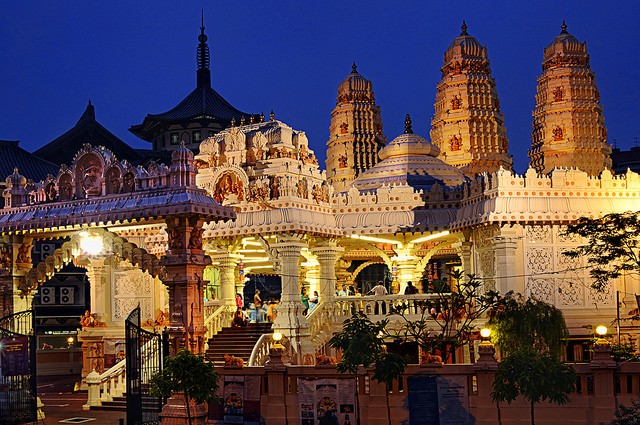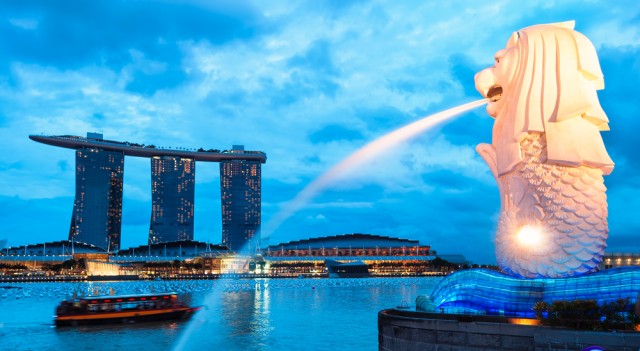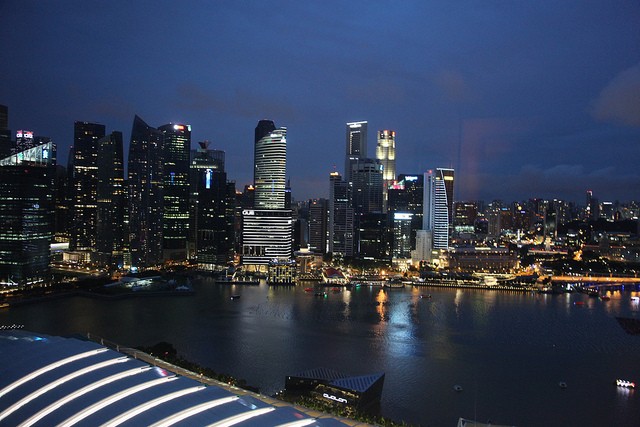 the Travel Enthusiast
the Travel Enthusiast
- 10 May
Adam in Amazing Places | NO COMMENTSSingapore, The Pearl of Southeast Asia
Singapore is probably Asia’s most prosperous state. It is tiny yet very rich and dynamic.
It is only bordered by Malaysia. The city itself is filled with huge skyscrapers yet you can see diverse old colonial and other immigrant buildings which makes the destination even more exciting.
The capital city is Singapore City. Other important towns are Serangoon, Changi, Katoong, Jurong, Bukit Panjang. The countries government status is republic.
It has four official languages: English, Malay, Tamil and Chinese.
Despite its size It has many things to see.
It offers you many attractions and variety of museums, leisure facilities, tourist destinations and others. The list of the must see places includes places includes
- Sri Mariamman Temple, it is the oldest Hindu temple in Singapore, being established in 1827 and dedicates to goddess Mariamman
- Changi museum. The museum shows you the wartime history of Singapore during the Japanese occupation.
- Merlion. The Merlion is a statue in downtown of Singapore and is also a symbol for the city. It has a lion’s head with a body of a fish. Merlion is also known for its splendid view of the city and for its beautiful park.
The climate of the country is very hot and tropical. It does not have specific seasons although showers acquire between November and January.
The topography of the country is mainly flat but there are sizable swamp areas on the eastern part of Singapore.
Environmentally, Singapore like most Asian countries faces with issues such as pollution and also hazes from the forest fires of Indonesia.
One of the main challenges is the lack of freshwater and land for the population due to its small size and very high population density.
The infrastructure of the country is one of the most developed in the world. There are totally 2025 miles of roads and all are very well paved.
According to “World Airport Awards”, based on the votes of airline customers, Changi airport is the best in the world, being very well organized and modern. Changi lies about 20 km of Singapore city.
The outstanding public transportation net is one of the benefic factors for the country’s booming tourism. Singapore is home of the largest harbor in the world.
However, despite the vast and modern infrastructure of the country, it faces problems such as traffic jams. Only a limited number of cars are allowed to park on public roads. Tolls and traffic controls are omnipresent, further intimidating car owners.
The limited vegetation of the country is extremely protected and well cared for, and while most swamps and forests were cleared away, Singapore nevertheless retained natural vegetation and it aims to make Singapore City one of the “greenest cities on the planet “.
- Flights
- Hotels
- Packages
- Cars
- Cruises
travel search by Travelgrove (get this widget)The population of the country is one of the most complex in the world. Singapore is predominantly populated by Chinese, Malays and Indians but there are also many others from the Middle East, Europe.
Singapore is said to be the most religiously diverse country in the world. While the country itself is young and small, it has a very large cultural and religious diversity thanks to its many ethnic groups. The most common religions are Buddhism, Christianity, Hinduism, Islam and Taoism. Despite its religious diversity and tolerance, sects such as Jehova’s Witnesses are banned.

Singapore, being a multi religious state, is filled with temples and churches,
A Hindu temple in Singapore City ©William Cho/flickrThe Health care system is one of the most modern and well organized in the world. Singapore has one of the lowest infant mortality rates in the world. Although very small in size, it has more than 20 hospitals, both private and government ran.
The economy is one of the most developed in the world, having one of the highest GDP/capita ratio. It is part of the Asian Tigers along with Hong Kong, Taiwan and South Korea. Initially the country gained its wealth from oil refining and exporting raw materials to its neighbor countries.
However, the most important factor of Singapore’s wealth is the development of innovative and quality pharmaceuticals, electronics, biotechnology and hightechs.
Singapore’s tourism is also increasing, further helping its economy.
Immigration to the country and custom regulations are quite simple, but some measures must be taken. Chewing gum, cigarette lighters, alcoholic drinks and tobacco that are not bought at duty free shops are not allowed. Citizens of most countries must apply for a visa to enter Singapore.
The Travel traffic in the country is good despite its infrastructure issues. Singapore, as a former British colony and still member of the Commonwealth, drives on the left. It has one of the most developed metro systems and taxis and buses are widespread in the country.
Travel Health is not an issue in the country although precautionary measures against Hepatitis are recommended.
The History of mighty Singapore
The earliest known mention of Singapore was in the 14th century, when the Javanese people called the place Temasek which means Sea Town. It was ruled for centuries by the Thai empire and while Temasek was still ruled by them through the 15th century, the sultanate of Malacca seized the entire island.
It was the Portuguese who first took Malacca in the 16th century. The Malaccan admiral erected a capital called Johor Lama.
However, the most significant part of the history of Singapore was in the 19th century. The British were very impressed by the island’s location and importance and had increasing interest in seizing it. Lieutenant Sir Stramford Raffles was permitted to build a trading post on the island.
The British eventually united Malacca and Penang and made Singapore a crown colony in 1867, becoming a British colony and part of the empire.
Two years later the Suez Canal opened, thus making the country even wealthier because of its many shipping callings.
During World War II it was occupied by the Japanese but nevertheless remained reconquered and made back as an important colony for the United Kingdom until 1963 when the country declared its independence from the empire.
Slowly but steadily the country gained more freedom from the UK. In 1955 it gained self governing rights and in 1959 it has become a state with its own citizenship and complete internal governing.
Although in 1963 it gained independence from the United Kingdom and merged with Malaysia in the same year, this was short lived, as it finally became an independent sovereign state in 1965 as a result of the expulsion of Malaysia.
You might also like


